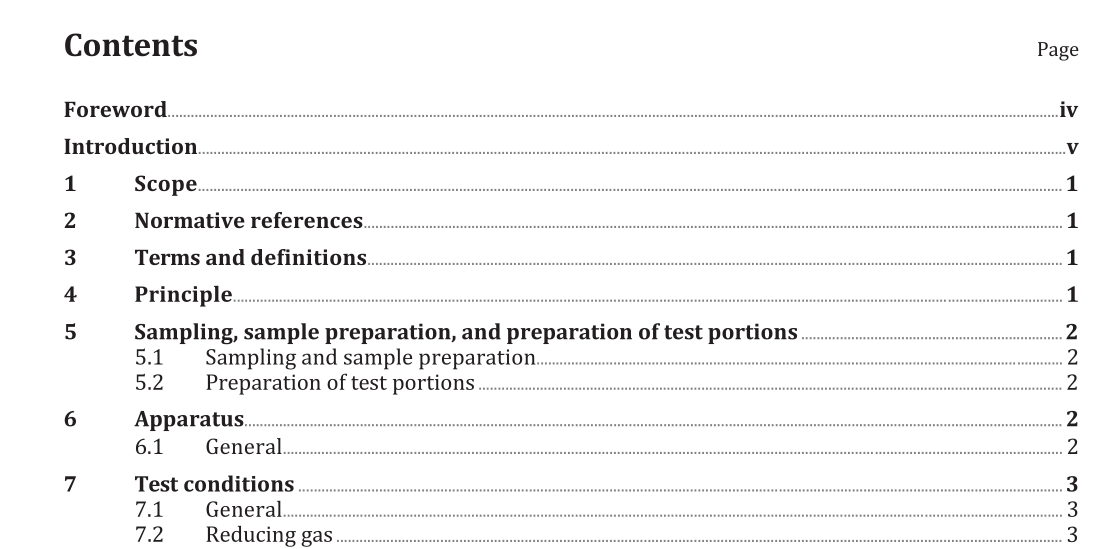BS ISO 11258:2015 pdf download.Iron ores for shaft direct-reduction feedstocks — Determination of the reducibility index, final degree of reduction and degree of metallization
1 Scope
This International Standard specifies a method to provide a relative measure for evaluating the extent to and ease to which oxygen can be removed from iron ores, when reduced under conditions resembling those prevailing in shaft direct-reduction processes. It specifies the determination of the reducibility,final degree of reduction, and degree of metallization.
This International Standard is applicable to lump ores and hot-bonded pellets.
2 Normative references
The following documents, in whole or in part, are normatively referenced in this document and are indispensable for its application. For dated references, only the edition cited applies. For undated references, the latest edition of the referenced document (including any amendments) applies.
ISO 2597-1, Iron ores — Determination of total iron content — Part 1: Titrimetric method after tin(II) chloride reduction
ISO 2597-2, Iron ores — Determination of total iron content — Part 2: Titrimetric methods after titanium(III) chloride reduction
ISO 3082, Iron ores — Sampling and sample preparation procedures
ISO 5416, Direct reduced iron — Determination of metallic iron — Bromine-methanol titrimetric method
ISO 9035, Iron ores — Determination of acid-soluble iron(II) content — Titrimetric method
ISO 11323, Iron ore and direct reduced iron — Vocabulary
3 Terms and definitions
For the purposes of this document, the terms and definitions given in ISO 11323 apply.
4 Principle
The test portion is isothermally reduced in a fixed bed, at 800 °C, using a reducing gas consisting of H 2,CO, CO 2 , and N 2 , and is weighed continuously or at specified time intervals until 90 min of reduction is reached. The rate of reduction is calculated at the oxygen/iron ratio of 0,9 and the final degree of reduction is calculated from the oxygen mass loss after 90 min (R 90 ). The degree of metallization is calculated either by a formula based on R 90 or by chemical analysis of the reduced product.
8.3 Reduction
Take, at random, another test portion prepared in 5.2 and record its mass (m 0 ). Place it in the reduction tube (6.2) and level its surface. NOTE In order to achieve a more uniform gas flow, a double-layer bed of porcelain balls sized between 10,0 mm and 12,5 mm can be placed between the perforated plate and the test portion. Close the top of the reduction tube. Connect the thermocouple, ensuring that its tip is in the centre of the test portion, as shown in Figure 1. Insert the reduction tube into the furnace (6.3) and suspend it centrally from the balance (6.4), ensuring that there is no contact with the furnace wall or heating elements. Connect the gas-supply system (6.5). Pass a flow of N 2 through the test portion at a rate of at least 25 L/min ± 0,5 L/min and commence heating. When the temperature of the test portion approaches 800 °C, increase the flow rate to 50 L/min ± 0,5 L/min. Continue heating while maintaining the flow of the N 2 until the balance reading is constant and the temperature is constant at 800 °C ± 5 °C for 10 min. In the case of lump ores, the temperature of the test portion should be raised to 800 °C over more than 60 min to reduce decrepitation.
BS ISO 11258:2015 pdf download
